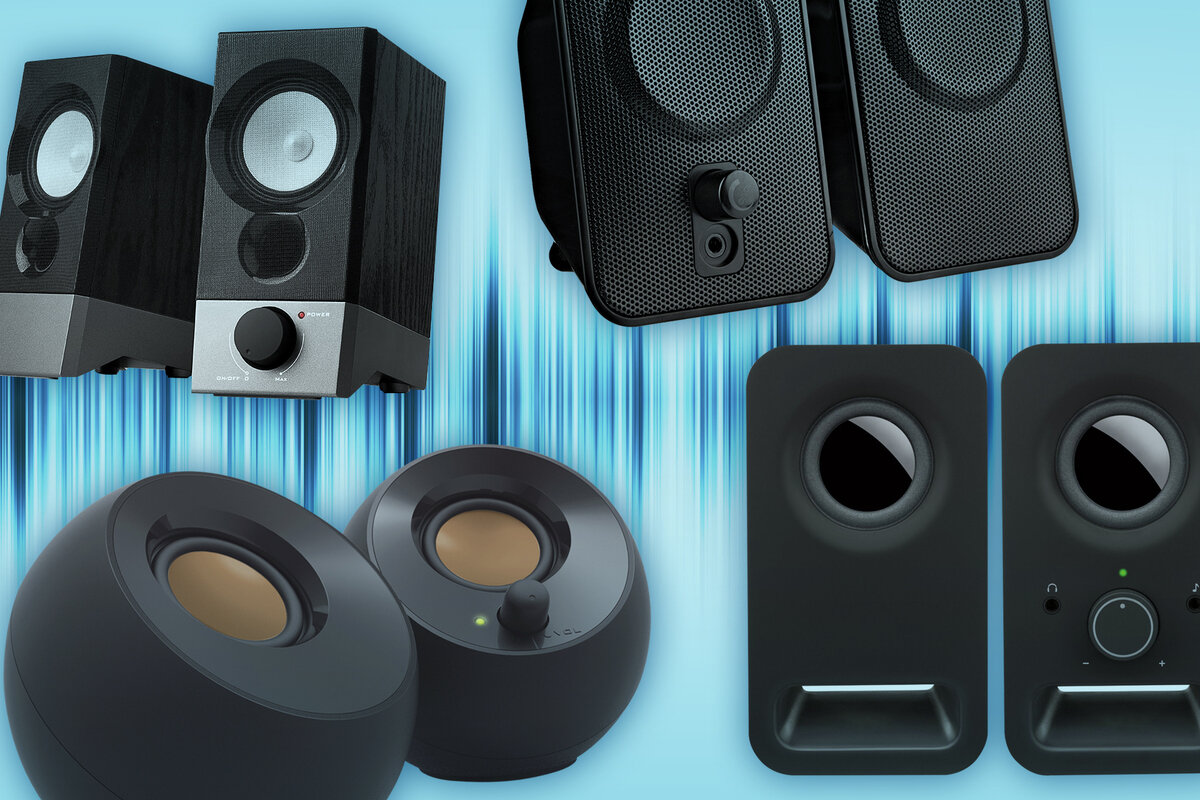
Your laptop’s built-in speakers aren’t doing any favors for the gigs and gigs of music and movies on your hard drive. Even the best ones can leave your audio sounding thin and lifeless. External PC speakers—along with a good set of headphones—are a must for getting the best fidelity from your media files.
A trip online or to your favorite electronics store will reveal a head-spinning variety of options in this category, with some systems costing as much or more than you paid for your laptop. You don’t need to take out a personal loan to upgrade your audio, though. Quality speakers can be found even with a budget of around $100. And while there is a certain degree of “you get what you pay for” at this price level, you’ll be rewarded with satisfying sound if you’re willing to make a few compromises.
We’ve given you a head start by testing some of the most commonly available budget models. All cost under $100, sometimes significantly less. We set up each in a typical environment—on a desk in a home office—and played a variety of audio tracks to push their sound capabilities. We also offer some buying advice below to help you choose the right model for your needs.
Updated October 22, 2019, with a review of Logitech’s Z337 speaker system, a welcome sight for anyone looking for budget speakers with Bluetooth. And as long as you prioritize that convenience over high-fidelity sound reproduction, you’ll probably find these speakers worth the wait.
Best overall budget speakers
We wouldn’t have thought a set of $25 speakers (available on Creative Labs’ website) would impress us much, let alone turn out to be our favorites. But Creative Pebble’s simple USB-powered 2.0 system defies all odds, producing richer, more immersive audio than you commonly find in speakers at twice the price.
Runner-up
We love the Edifier R19U. This 2.0 system sports rich mids, crisp highs, and deep, controlled bass. The faux-wood enclosures also give them a slightly vintage vibe that stands out from the matte-plastic pack. A great value at just $30 on Amazon.
Best budget 2.1 system
Though the Sound BlasterX Kratos S3 is marketed for gaming, we like the warm, natural sound and beefy bass it brought to of all our media. At just $80 on Amazon, it’s an inexpensive entry point into 2.1 speaker systems.
How to shop for PC speakers
2.0 speakers vs. 2.1 speakers
Sure, a 5.1 (five speakers, one subwoofer) multi-channel speaker system sounds pretty sexy. But even if you were to unearth one for $50 or $60, the quality would almost certainly be just as cheap. That money can buy a much better quality two-speaker system. These basic 2.0 stereo setups, which are comprised of just a left and right speaker with a single driver (the actual loudspeaker) in each, abound in this price range. Occasionally you can also find a decent 2.1 system for—a pair of speakers to handle the higher frequencies and separate subwoofer for the bass—for not much more. These take up more space but often produce more balanced sound. More on that next.
Sound quality: Ask your ears, not the spec sheet
Try not to be seduced by manufacturer’s specs on sound quality. Even if you can parse frequency response numbers, they are frequently exaggerated. Let your ears be your guide instead. Listen for a good balance between the high (treble), mid, and low (bass) frequencies. Often, speakers will exaggerate one—usually the treble or the bass—at the expense of the others. Good speakers will produce full, detailed audio that sounds as the creator intended it.
Be aware, though, that finding strong bass response in this price range can be challenging. Without a subwoofer, 2.0 systems have trouble reproducing low frequencies. The manufacturers often use technological tweaks to beef up the bass notes, but these can sound boomy, and muddy the overall mix. If a deep, controlled bottom end is a priority, a 2.1 system might be a better investment.
AC power vs. USB: The tradeoffs
Both these options are prevalent in the sub-$100 price range. USB-powered speakers reduce cord clutter, as they don’t need a separate power cable. However, they can’t supply as much juice as the AC variety, so they tend to produce lower volume and less bass.